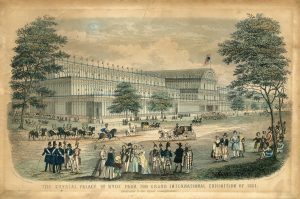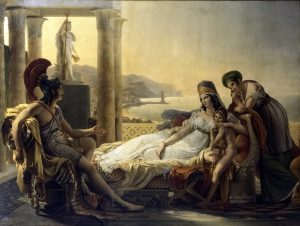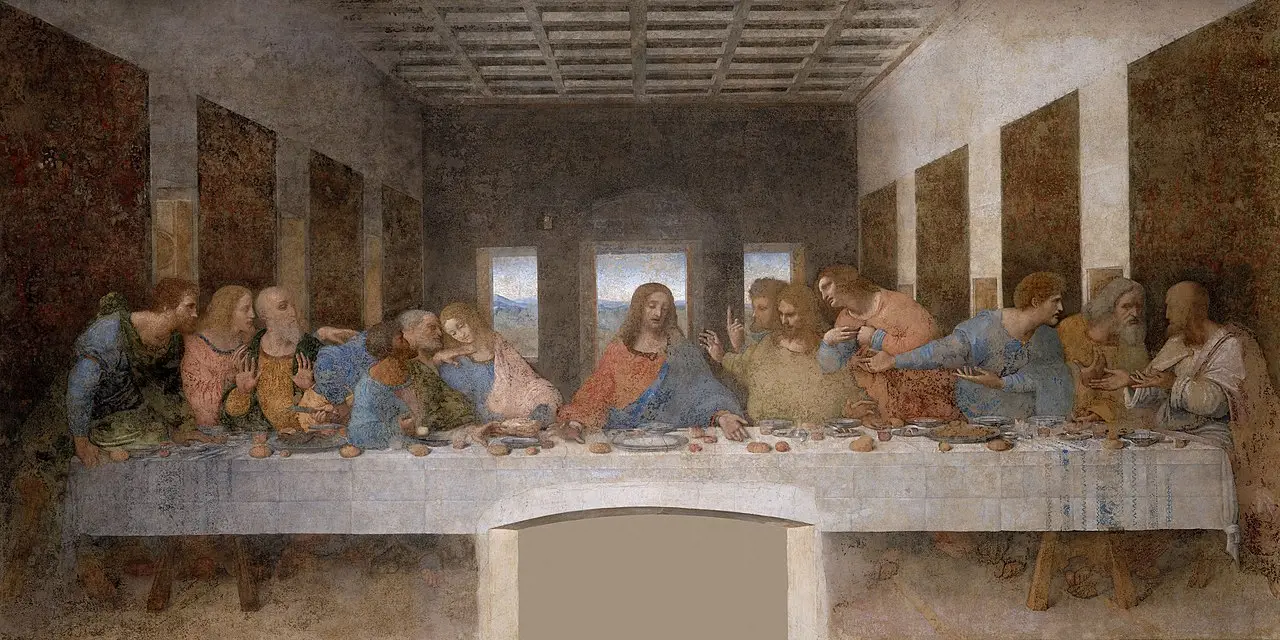
The Last Supper (Wiki Image).
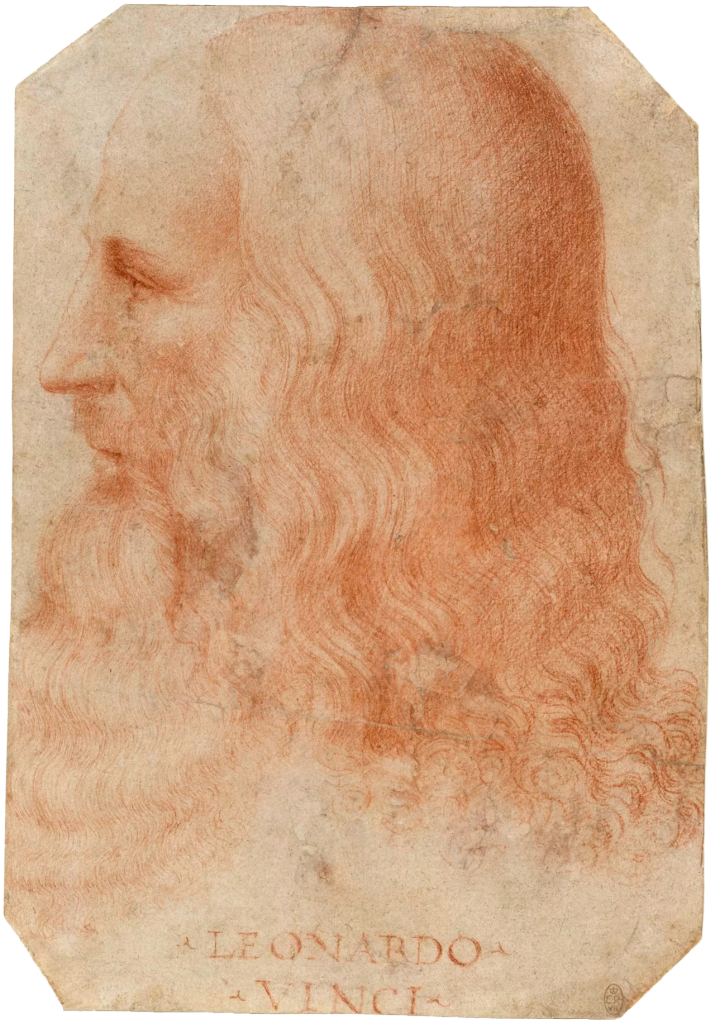
Leonardo da Vinci (Wiki Image).
Introduction
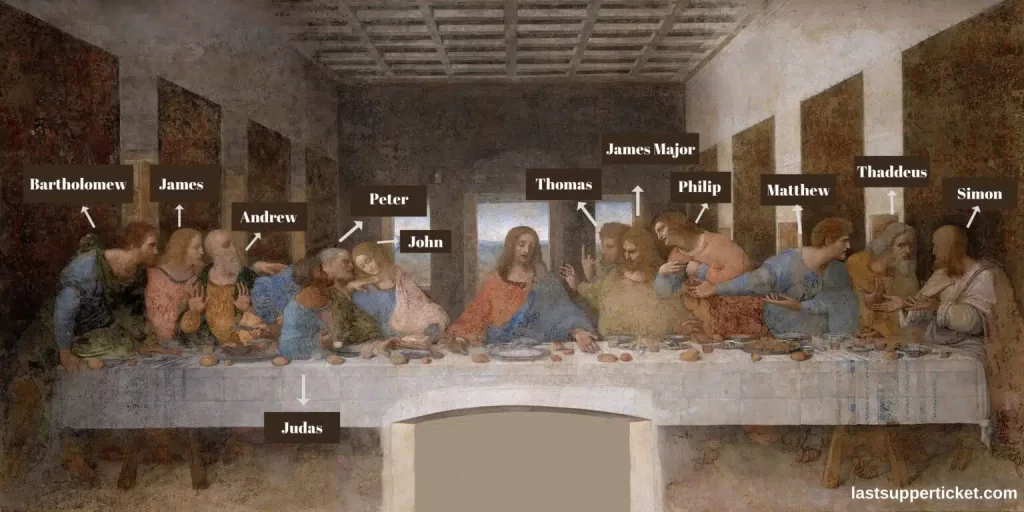
From left to right, the characters represented in the painting The Last Supper are:
- Group 1: Bartholomew, James, and Andrew (left side)
- Group 2: Peter, Judas, and John (left center)
- Jesus in the Center (below)
- Group 3: Thomas, James Major, and Philip (right center)
- Group 4: Matthew, Thaddeus, and Simon (right side)
Left Side
Bartholomew
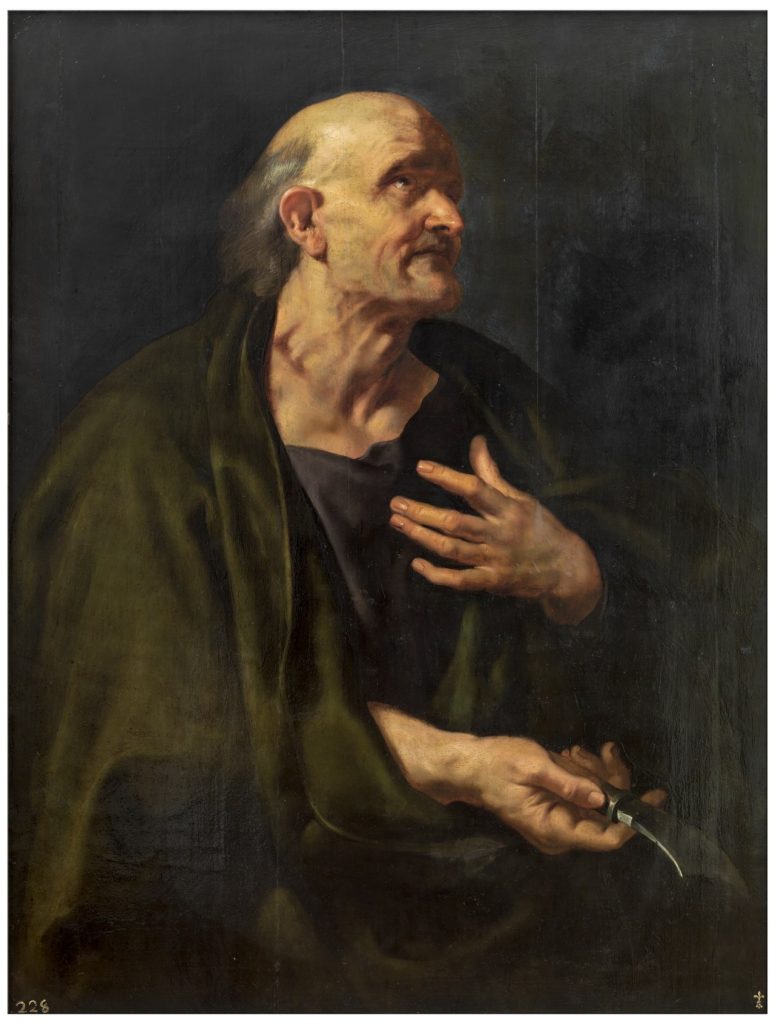
Saint Bartholomew the Apostle (Wiki Image).
Bartholomew is the apostle depicted at the far left of Leonardo da Vinci’s The Last Supper. He is a bearded man with long, flowing hair. His face is turned in profile, and he is looking at the viewer with a surprised expression.
Bartholomew was one of the Twelve Apostles of Jesus Christ. He was known for his fiery temper and his zeal for spreading the gospel. He was also known for his willingness to suffer for his faith. According to tradition, Bartholomew was skinned alive and then crucified.
In The Last Supper, Bartholomew is shown looking surprised and shocked. This is likely because he has just heard Jesus announce that one of the apostles will betray him. Bartholomew is likely wondering if he is the betrayer.
The depiction of Bartholomew in The Last Supper is both realistic and symbolic. The realistic details, such as his beard and long hair, help to make him a believable character. The symbolic details, such as his surprised expression, help convey the moment’s emotion.
Bartholomew is an important figure in Christian history. He is a reminder of the cost of discipleship and the importance of faithfulness. He is also a reminder that even in the midst of betrayal, there is hope.
James
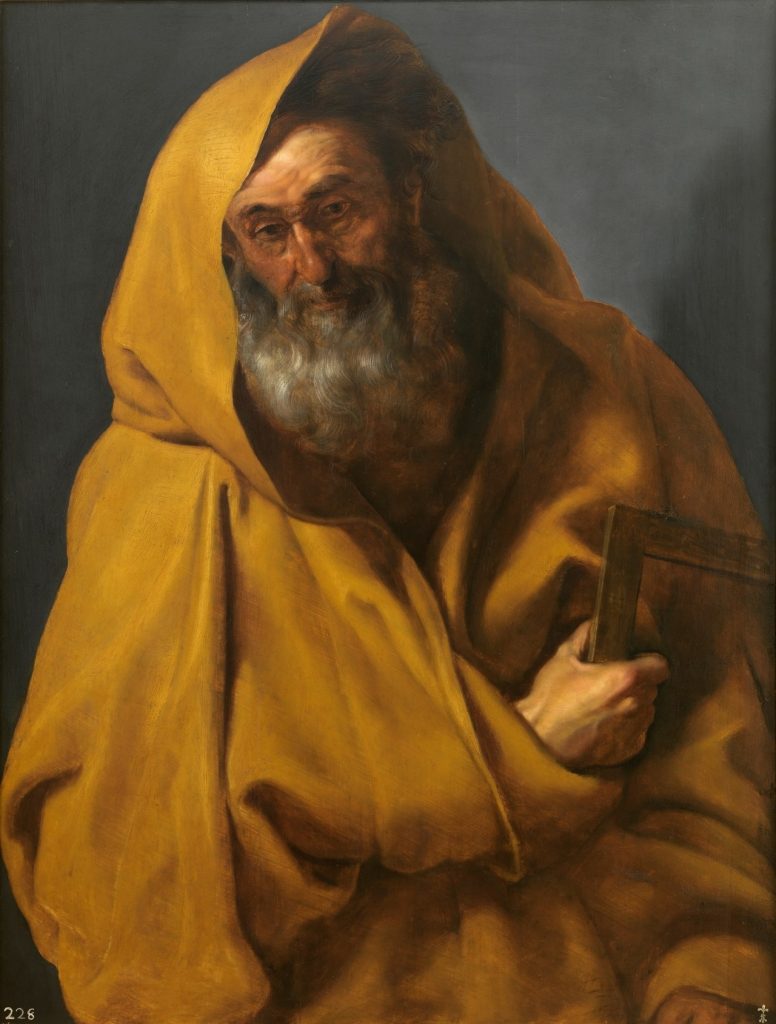
Saint James the Minor (Wiki Image).
James the Greater is the apostle depicted to the right of Jesus in Leonardo da Vinci’s The Last Supper. He is a young man with short hair and a beard. He is leaning forward in his chair, and his face is filled with shock and disbelief.
James the Greater was one of the original twelve apostles of Jesus Christ. He was a brother of John the Apostle, and he was known for his fiery temper and his zeal for spreading the gospel. He was also known for his willingness to suffer for his faith. According to tradition, James was beheaded by Herod Agrippa I in 44 AD.
In The Last Supper, James the Greater is shown reacting to Jesus’s announcement that one of the apostles will betray him. James is clearly shocked and in disbelief. He is likely wondering if he is the betrayer.
The depiction of James in The Last Supper is both realistic and symbolic. The realistic details, such as his short hair and beard, help to make him a believable character. The symbolic details, such as his shocked expression, help convey the moment’s emotion.
James the Greater is an important figure in Christian history. He is a reminder of the cost of discipleship and the importance of faithfulness. He is also a reminder that even in the midst of betrayal, there is hope.
Andrew
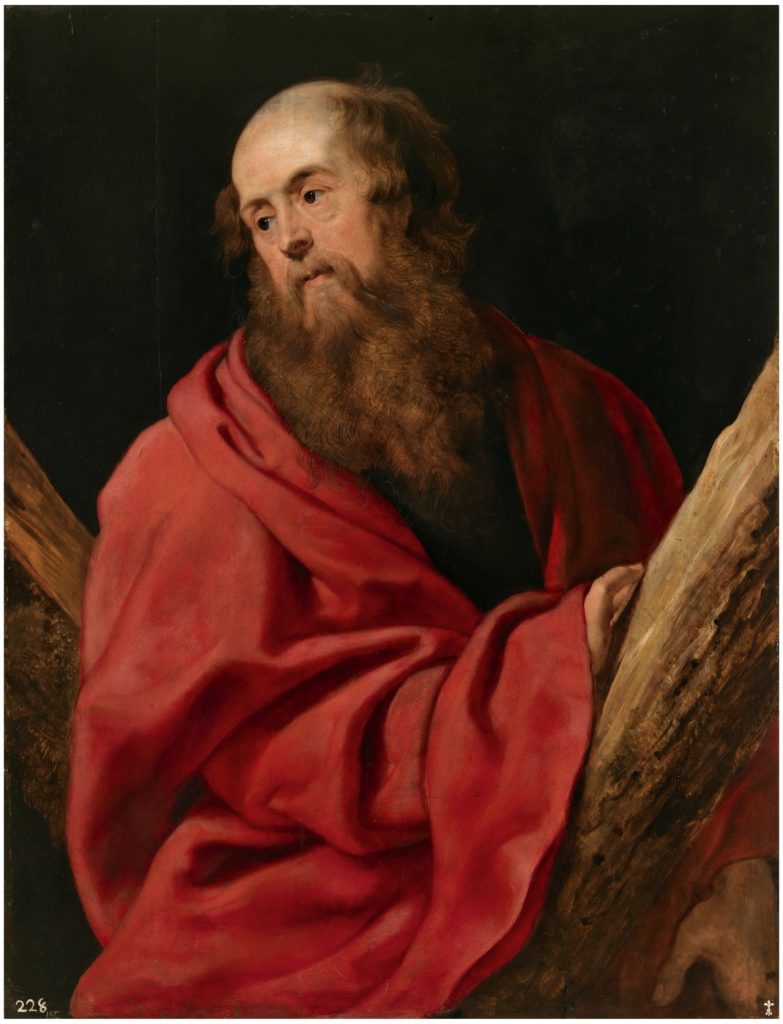
Saint Andrew the Apostle (Wiki Image).
Andrew is the apostle depicted next to Bartholomew in Leonardo da Vinci’s The Last Supper. He is a bearded man with short hair. He is leaning forward in his chair, and his face is filled with surprise and concern.
Andrew was one of the twelve apostles of Jesus Christ. He was the brother of Simon Peter, and he was known for his zeal for spreading the gospel. He was also known for his willingness to suffer for his faith. According to tradition, Andrew was crucified on an X-shaped cross.
In The Last Supper, Andrew is shown reacting to Jesus’s announcement that one of the apostles will betray him. Andrew is clearly surprised and concerned. He is likely wondering who the betrayer is.
The depiction of Andrew in The Last Supper is both realistic and symbolic. The realistic details, such as his beard and short hair, help to make him a believable character. The symbolic details, such as his surprised expression, help to convey the emotion of the moment.
Andrew is an important figure in Christian history. He is a reminder of the cost of discipleship and the importance of faithfulness. He is also a reminder that even in the midst of betrayal, there is hope.
Here are some specific details about Andrew in The Last Supper that are worth noting:
- He is leaning forward in his chair, which shows that he is interested in what Jesus is saying.
- His face is filled with surprise and concern, which shows that he is shocked by Jesus’s announcement.
- He is looking at Jesus, which shows that he is seeking his guidance.
- He is wearing a blue robe, which is the color of faith and hope.
Overall, Andrew is depicted in The Last Supper as a faithful and concerned apostle. He is a reminder of the importance of faith and hope in the face of betrayal.
What discussion they had was Bartholomew, James, and Andrew?
The discussion that Bartholomew, James, and Andrew had in Leonardo da Vinci’s “The Last Supper” is a matter of speculation. There is no record of what they said, and the painting itself does not provide any clues. However, there are a few possible interpretations of their discussion.
One possibility is that they were discussing Jesus’ announcement that one of them would betray him. Bartholomew, James, and Andrew were all close to Jesus, and they would have been shocked and dismayed by his announcement. They may have been discussing who the betrayer could be, or they may have been trying to come to terms with the fact that one of their own would betray Jesus.
Another possibility is that they were discussing the upcoming events of Jesus’ Passion and death. Bartholomew, James, and Andrew were all aware that Jesus was destined to suffer and die, but they may have been trying to come to terms with the reality of what was about to happen. They may have been discussing how they could best support Jesus during his final days, or they may have been trying to find comfort in their faith.
Finally, it is also possible that Bartholomew, James, and Andrew were simply discussing everyday matters. They may have been discussing their families, work, or hopes for the future. It is also possible that they were simply enjoying each other’s company and the company of Jesus.
Ultimately, Bartholomew, James, and Andrew’s discussion in Leonardo da Vinci’s “The Last Supper” is a mystery. There is no way to know what they said, but the painting provides us with a glimpse into their thoughts and feelings at a time of great uncertainty and upheaval.
Left Center
Peter
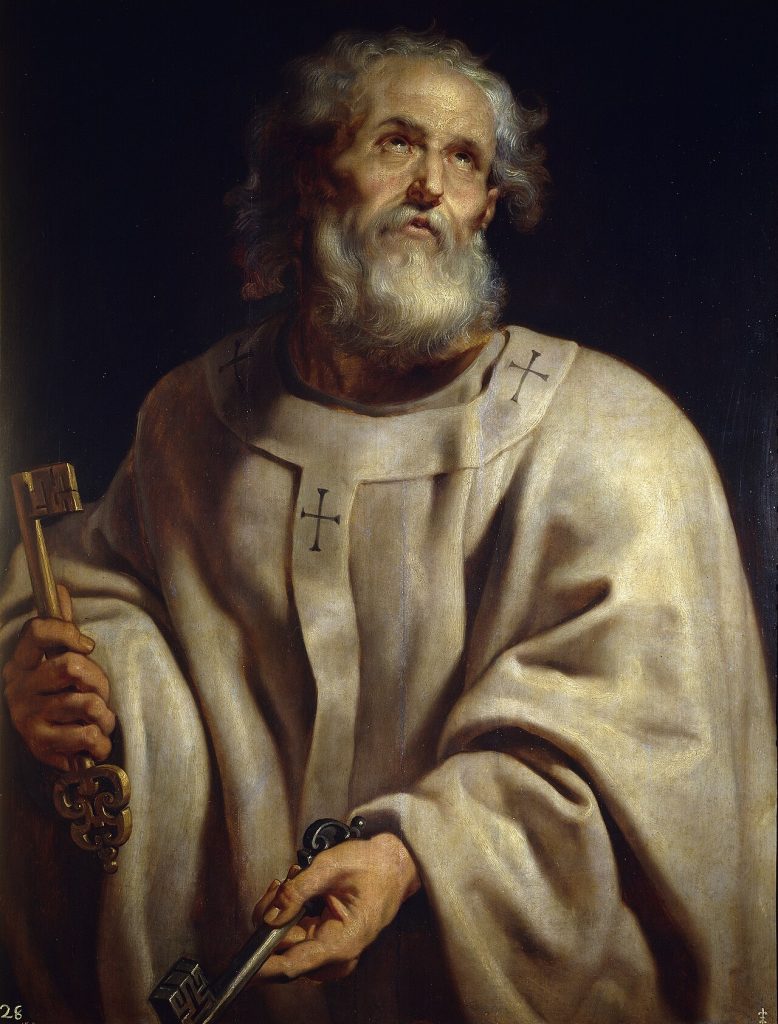
Pope Saint Peter the Apostle (Wiki Image).
Peter is the apostle depicted to the left of Judas Iscariot in Leonardo da Vinci’s The Last Supper. He is a bearded man with short hair. He is leaning forward in his chair, and his face is filled with anger and betrayal.
Peter was one of the twelve apostles of Jesus Christ. He was known for his fiery temper and his loyalty to Jesus. He was also known for his willingness to speak his mind. According to tradition, Peter was crucified upside down in Rome.
In The Last Supper, Peter is shown reacting to Jesus’s announcement that one of the apostles will betray him. Peter is clearly angry and betrayed. He is likely wondering why one of his own would betray Jesus.
The depiction of Peter in The Last Supper is both realistic and symbolic. The realistic details, such as his beard and short hair, help to make him a believable character. The symbolic details, such as his angry expression, help convey the moment’s emotion.
Peter is an important figure in Christian history. He is a reminder of the cost of discipleship and the importance of faithfulness. He is also a reminder that even in the midst of betrayal, there is hope.
Here are some specific details about Peter in The Last Supper that are worth noting:
- He is leaning forward in his chair, which shows that he is interested in what Jesus is saying.
- His face is filled with anger and betrayal, which shows that he is shocked by Jesus’s announcement.
- He is looking at Judas, which shows that he is blaming him for the betrayal.
- He is holding a knife in his hand, which foreshadows that he will sever a soldier’s ear as he attempts to protect Christ from arrest.
Overall, Peter is depicted in The Last Supper as a faithful and concerned apostle. He is a reminder of the importance of faith and hope in the face of betrayal.
Judas Iscariot
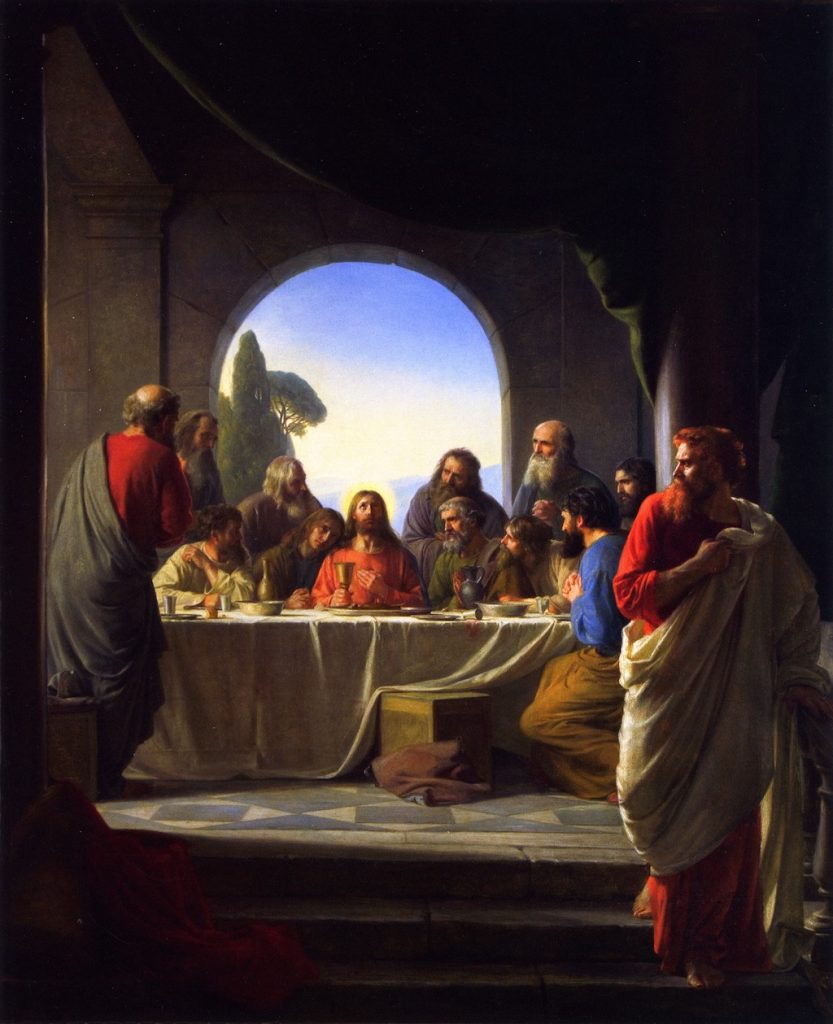
Judas Iscariot (right) (Wiki Image).
Judas Iscariot is the apostle depicted in the lower right portion of Leonardo da Vinci’s The Last Supper. He is the only apostle who is not looking at Jesus. Instead, he is looking down at the table, his face hidden in shadow. He is clutching a bag of money in his hand, which is a reference to the thirty pieces of silver that he was paid to betray Jesus.
Judas Iscariot was one of the twelve apostles of Jesus Christ. He was known for his greed and his willingness to betray Jesus for money. According to the Bible, Judas Iscariot hung himself after betraying Jesus.
In The Last Supper, Judas Iscariot is depicted as a dark and sinister figure. He is the only apostle who is not looking at Jesus, and he is clutching the bag of money that symbolizes his betrayal. This shows that Judas Iscariot is not part of the group of faithful apostles and that he is only interested in his own gain.
Judas Iscariot is an important figure in Christian history. He is a reminder of the dangers of greed and the importance of faithfulness. He is also a reminder that even in the midst of betrayal, there is hope.
Here are some specific details about Judas Iscariot in The Last Supper that are worth noting:
- He is the only apostle who is not looking at Jesus.
- He is looking down at the table, his face hidden in shadow.
- He is clutching a bag of money in his hand.
- His skin is pale, and his hair is dark.
- His expression is one of greed and betrayal.
Overall, Judas Iscariot is depicted in The Last Supper as a dark and sinister figure. He is a reminder of the dangers of greed and the importance of faithfulness. He is also a reminder that even in the midst of betrayal, there is hope.
John
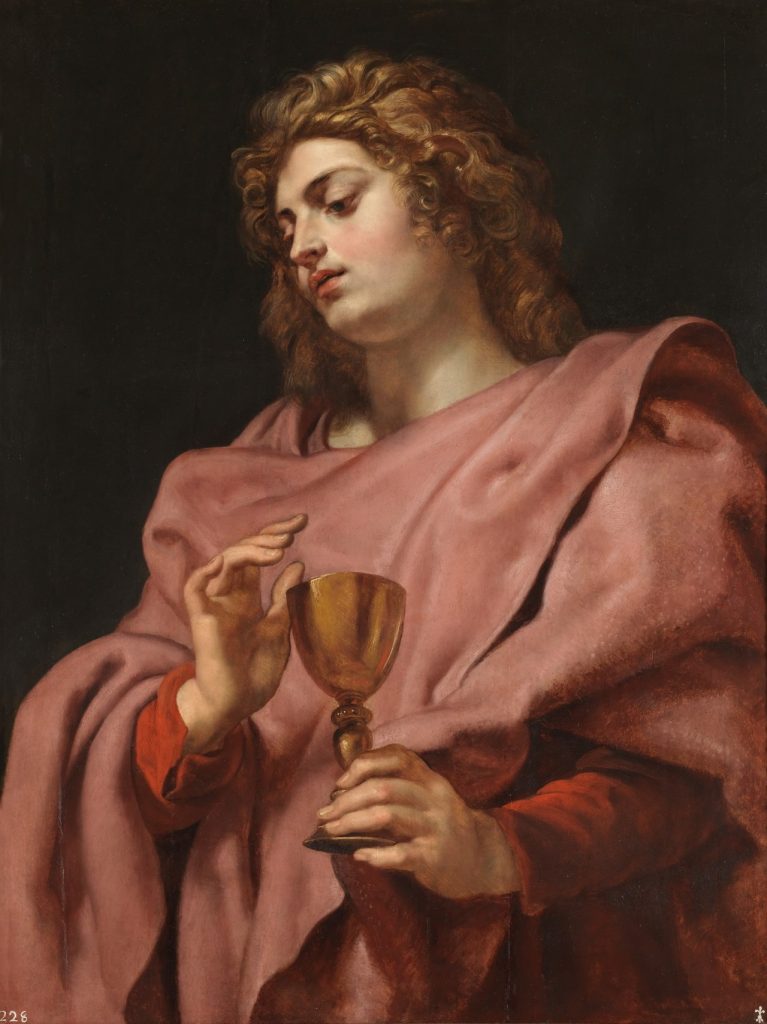
Saint John the Apostle (Wiki Image).
John is the apostle depicted to the right of Jesus in Leonardo da Vinci’s The Last Supper. He is a young man with long, flowing hair and a beard. He is leaning on Jesus’s shoulder, and his face is filled with love and devotion.
John was one of the twelve apostles of Jesus Christ. He was known for his love for Jesus, and he was often called “the disciple whom Jesus loved.” He was also known for his willingness to serve Jesus, and he was the only apostle who stayed with Jesus at the crucifixion.
In The Last Supper, John is shown leaning on Jesus’s shoulder. This shows his close relationship with Jesus and his love and devotion for him. John’s face is also filled with emotion, and it is possible that he is weeping. This could be because he is sad to hear Jesus’s announcement that one of the apostles will betray him, or it could be because he is already aware of Judas’s betrayal.
The depiction of John in The Last Supper is both realistic and symbolic. The realistic details, such as his long hair and beard, help to make him a believable character. The symbolic details, such as his love for Jesus, help to convey the emotion of the moment.
John is an important figure in Christian history. He is a reminder of the importance of love and devotion in a discipleship relationship. He is also a reminder that even in the midst of betrayal, there is love.
Here are some specific details about John in The Last Supper that are worth noting:
- He is leaning on Jesus’s shoulder, which shows his close relationship with Jesus.
- His face is filled with love and devotion, which shows his love for Jesus.
- He is weeping, which could be because he is sad to hear Jesus’s announcement or because he is already aware of Judas’s betrayal.
- He is wearing a red robe, which is the color of love and passion.
Overall, John is depicted in The Last Supper as a loving and devoted apostle. He is a reminder of the importance of love and devotion in a discipleship relationship. He is also a reminder that even in the midst of betrayal, there is love.
What discussion they had was Peter, Judas, and John?
The discussion between Peter, Judas, and John in Leonardo da Vinci’s The Last Supper is a matter of speculation, as there is no record of what was actually said. However, based on the painting and the biblical accounts of the Last Supper, it is possible to make some inferences about what the conversation may have been about.
In the painting, Peter is shown leaning in toward John, who is seated next to Judas. Peter’s face is filled with anger and betrayal, while John’s face is calm and resigned. Judas, on the other hand, is looking down at the table, his face hidden in shadow.
It is possible that Peter is confronting Judas about his betrayal of Jesus. Peter is known for his fiery temper, and he would have been furious to learn that one of his fellow disciples had betrayed Jesus. John, on the other hand, is known for his compassion and understanding. He may have been trying to calm Peter down and prevent him from doing anything rash.
It is also possible that Peter and John are discussing what to do next. Jesus has just predicted that one of them will betray him, and they are unsure of what to believe. Peter may be asking John for advice while John is trying to comfort him.
Ultimately, the discussion between Peter, Judas, and John is left up to the viewer’s interpretation. However, the painting does provide some clues about what the conversation may have been about. It is a moment of great tension and emotion as the disciples come to terms with the fact that Jesus will soon be betrayed and crucified.
In addition to the biblical accounts of the Last Supper, there are also a number of historical sources that can be used to interpret the painting. For example, the writings of the early church fathers often mention the discussion between Peter, Judas, and John. These sources can provide some additional insight into what the conversation may have been about.
Ultimately, the discussion between Peter, Judas, and John is a mystery. However, the painting by Leonardo da Vinci provides a powerful and moving depiction of this moment in history. It is a reminder of the betrayal that Jesus faced and the love and support that he received from his disciples.
Right Center
Thomas
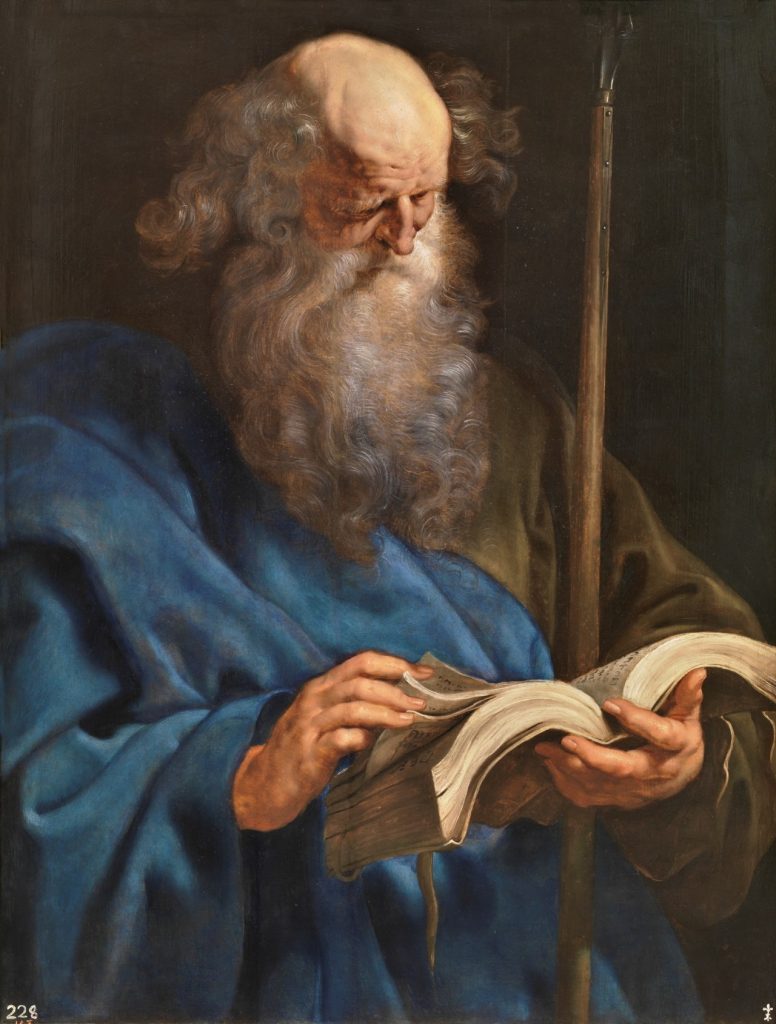
Saint Thomas the Apostle (Wiki Image).
Thomas is the apostle depicted to the left of John in Leonardo da Vinci’s The Last Supper. He is a young man with short hair and a beard. He is pointing his finger upwards, and his face is filled with doubt and confusion.
Thomas was one of the twelve apostles of Jesus Christ. He was known for his doubt, and he was often called “doubting Thomas.” He was also known for his willingness to learn, and he was the only apostle who asked Jesus to see the wounds in his hands and feet after his resurrection.
In The Last Supper, Thomas is shown pointing his finger upwards. This is likely a reference to his famous line, “Unless I see in his hands the mark of the nails, and put my finger in the mark of the nails, and put my hand in his side, I will not believe.” This shows that Thomas is still struggling with doubt, even after Jesus has announced that he will be betrayed.
The depiction of Thomas in The Last Supper is both realistic and symbolic. The realistic details, such as his short hair and beard, help to make him a believable character. The symbolic details, such as his pointing finger, help to convey the emotion of the moment.
Thomas is an important figure in Christian history. He is a reminder that doubt is a natural part of faith and that it is okay to ask questions. He is also a reminder that Jesus is always willing to answer our questions and help us overcome our doubts.
Here are some specific details about Thomas in The Last Supper that are worth noting:
- He is pointing his finger upwards, which is a reference to his famous line, “Unless I see in his hands the mark of the nails, and put my finger in the mark of the nails, and put my hand in his side, I will not believe.”
- His face is filled with doubt and confusion, which shows that he is still struggling with doubt, even after Jesus has announced that he will be betrayed.
- He is wearing a blue robe, which is the color of faith and hope.
Overall, Thomas is depicted in The Last Supper as a doubting apostle. He is a reminder that doubt is a natural part of faith and that it is okay to ask questions. He is also a reminder that Jesus is always willing to answer our questions and help us overcome our doubts.
James Major
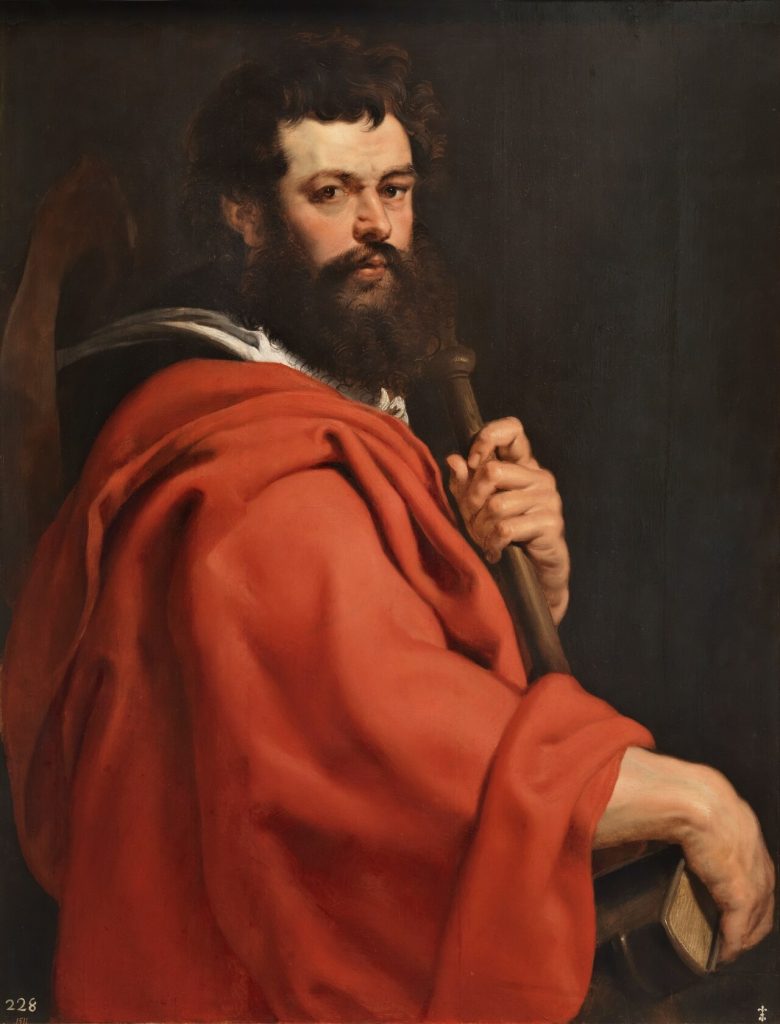
Saint James Major (Wiki Image).
James Major is the apostle depicted to the right of Thomas in Leonardo da Vinci’s The Last Supper. He is a young man with short hair and a beard. He is gesturing with his hands, and his face is filled with shock and disbelief.
James Major was one of the twelve apostles of Jesus Christ. He was the son of Zebedee and Salome, and he was the brother of John the Apostle. He was known for his zeal and his willingness to serve Jesus. He was also known for his martyrdom, as he was beheaded by Herod Agrippa I in 44 AD.
In The Last Supper, James Major is shown gesturing with his hands. This is likely a sign of his shock and disbelief at Jesus’s announcement that one of the apostles would betray him. James Major is also looking at Thomas, which could be a sign that he is trying to comfort him.
The depiction of James Major in The Last Supper is both realistic and symbolic. The realistic details, such as his short hair and beard, help to make him a believable character. The symbolic details, such as his gesturing hands, help to convey the emotion of the moment.
James Major is an important figure in Christian history. He is a reminder of the cost of discipleship and the importance of faithfulness. He is also a reminder that even in the midst of betrayal, there is hope.
Here are some specific details about James Major in The Last Supper that are worth noting:
- He is gesturing with his hands, which is a sign of his shock and disbelief.
- He is looking at Thomas, which could be a sign that he is trying to comfort him.
- He is wearing a red robe, which is the color of love and passion.
Overall, James Major is depicted in The Last Supper as a shocked and bewildered apostle. He is a reminder of the cost of discipleship and the importance of faithfulness. He is also a reminder that even in the midst of betrayal, there is hope.
Philip
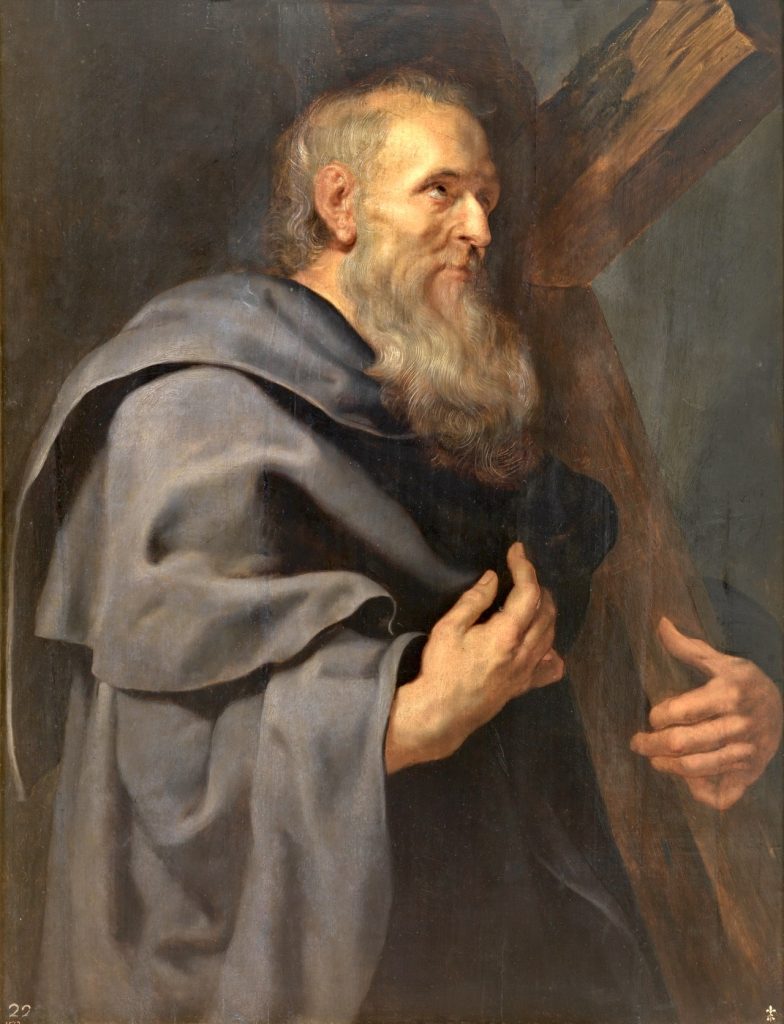
Saint Philip the Apostle (Wiki Image).
Philip is the apostle depicted to the right of James Major in Leonardo da Vinci’s The Last Supper. He is a young man with short hair and a beard. He is looking at Jesus with a puzzled expression on his face.
Philip was one of the twelve apostles of Jesus Christ. He was known for his loyalty to Jesus and his willingness to serve him. He was also known for his questions, as he was often asking Jesus for clarification on his teachings.
In The Last Supper, Philip is shown looking at Jesus with a puzzled expression on his face. This is likely because he is trying to understand Jesus’s announcement that one of the apostles will betray him. Philip is also looking at James Major, which could be a sign that he is trying to get his help in understanding Jesus’s words.
The depiction of Philip in The Last Supper is both realistic and symbolic. The realistic details, such as his short hair and beard, help to make him a believable character. The symbolic details, such as his puzzled expression, help to convey the emotion of the moment.
Philip is an important figure in Christian history. He is a reminder of the importance of asking questions and seeking understanding. He is also a reminder that even in the midst of confusion, there is hope.
Here are some specific details about Philip in The Last Supper that are worth noting:
- He is looking at Jesus with a puzzled expression on his face, which is a sign that he is trying to understand Jesus’s announcement.
- He is looking at James Major, which could be a sign that he is trying to get his help in understanding Jesus’s words.
- He is wearing a blue robe, which is the color of faith and hope.
Overall, Philip is depicted in The Last Supper as a puzzled and perplexed apostle. He is a reminder of the importance of asking questions and seeking understanding. He is also a reminder that even in the midst of confusion, there is hope.
What discussion they had was Thomas, James Major, and Philip?
The discussion between Thomas, James Major, and Philip in Leonardo da Vinci’s The Last Supper is also a matter of speculation, as there is no record of what was actually said. However, based on the painting and the biblical accounts of the Last Supper, it is possible to make some inferences about what the conversation may have been about.
In the painting, Thomas is shown pointing his finger upwards, while James Major is gesturing with his hands, and Philip is looking at Jesus. This suggests that they are discussing Jesus’s prediction that one of them will betray him.
Thomas is known for his doubt, so he may ask James Major and Philip for their thoughts on the matter. James Major is known for his wisdom, so he may try to explain to Thomas that Jesus is trustworthy. Philip is known for his loyalty, so he may be simply expressing his support for Jesus.
It is also possible that the three apostles are discussing what to do in the wake of Jesus’s prediction. They are all shocked and confused, and they may be trying to come to terms with the fact that one of them will betray Jesus.
Ultimately, the discussion between Thomas, James Major, and Philip is left up to the viewer’s interpretation. However, the painting does provide some clues about what the conversation may have been about. It is a moment of great confusion and uncertainty as the apostles try to make sense of Jesus’s prediction.
In addition to the biblical accounts of the Last Supper, there are also a number of historical sources that can be used to interpret the painting. For example, the writings of the early church fathers often mention the discussion between Thomas, James Major, and Philip. These sources can provide some additional insight into what the conversation may have been about.
Ultimately, the discussion between Thomas, James Major, and Philip is a mystery. However, the painting by Leonardo da Vinci provides a powerful and moving depiction of this moment in history. It is a reminder of the confusion and uncertainty that the apostles faced and the faith that they had in Jesus.
Right Side
Matthew
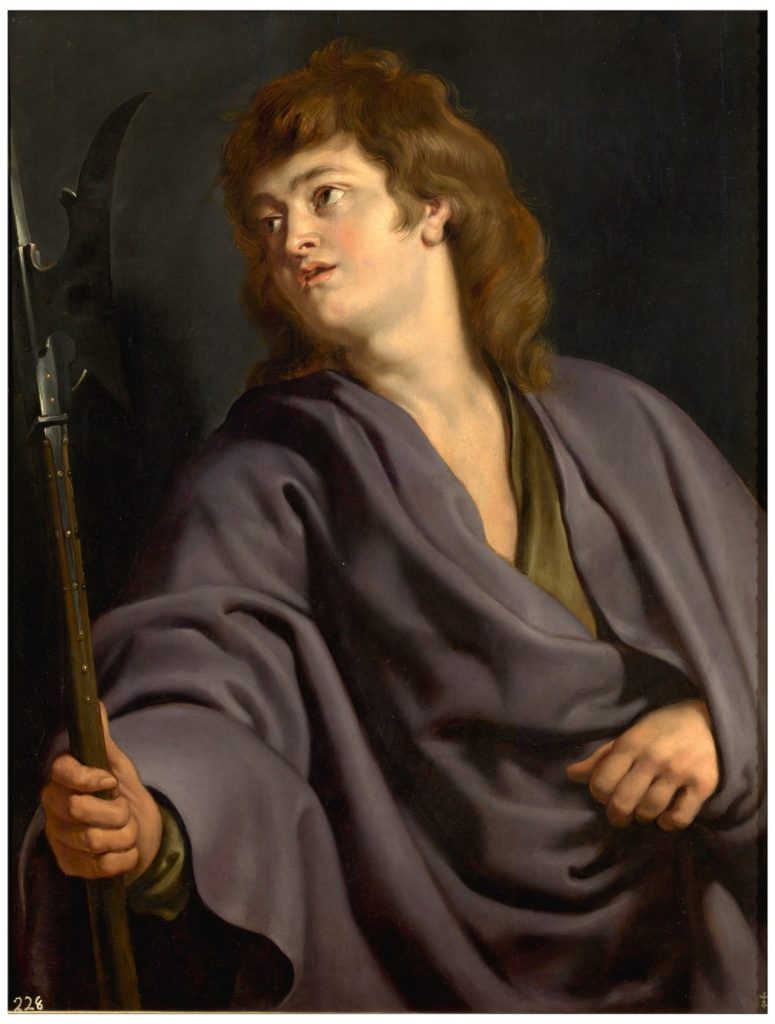
Saint Matthew the Apostle (Wiki Image).
Matthew is the apostle depicted to the right of Philip in Leonardo da Vinci’s The Last Supper. He is a young man with short hair and a beard. He is looking at Jesus with a calm and determined expression on his face.
Matthew was one of the twelve apostles of Jesus Christ. He was known for his tax-collecting background and his willingness to follow Jesus. He was also known for his writing skills, as he was the author of the Gospel of Matthew.
In The Last Supper, Matthew is shown looking at Jesus with a calm and determined expression on his face. This is likely because he is committed to following Jesus, even in the face of betrayal. Matthew is also looking at Philip, which could be a sign that he is trying to reassure him.
The depiction of Matthew in The Last Supper is both realistic and symbolic. The realistic details, such as his short hair and beard, help to make him a believable character. The symbolic details, such as his calm and determined expression, help to convey the emotion of the moment.
Matthew is an important figure in Christian history. He is a reminder of the importance of commitment and faithfulness. He is also a reminder that even in the midst of betrayal, there is hope.
Here are some specific details about Matthew in The Last Supper that are worth noting:
- He is looking at Jesus with a calm and determined expression on his face, which is a sign that he is committed to following Jesus.
- He is looking at Philip, which could be a sign that he is trying to reassure him.
- He is wearing a green robe, which is the color of hope and new beginnings.
Overall, Matthew is depicted in The Last Supper as a calm and determined apostle. He is a reminder of the importance of commitment and faithfulness. He is also a reminder that even in the midst of betrayal, there is hope.
Jude Thaddeus
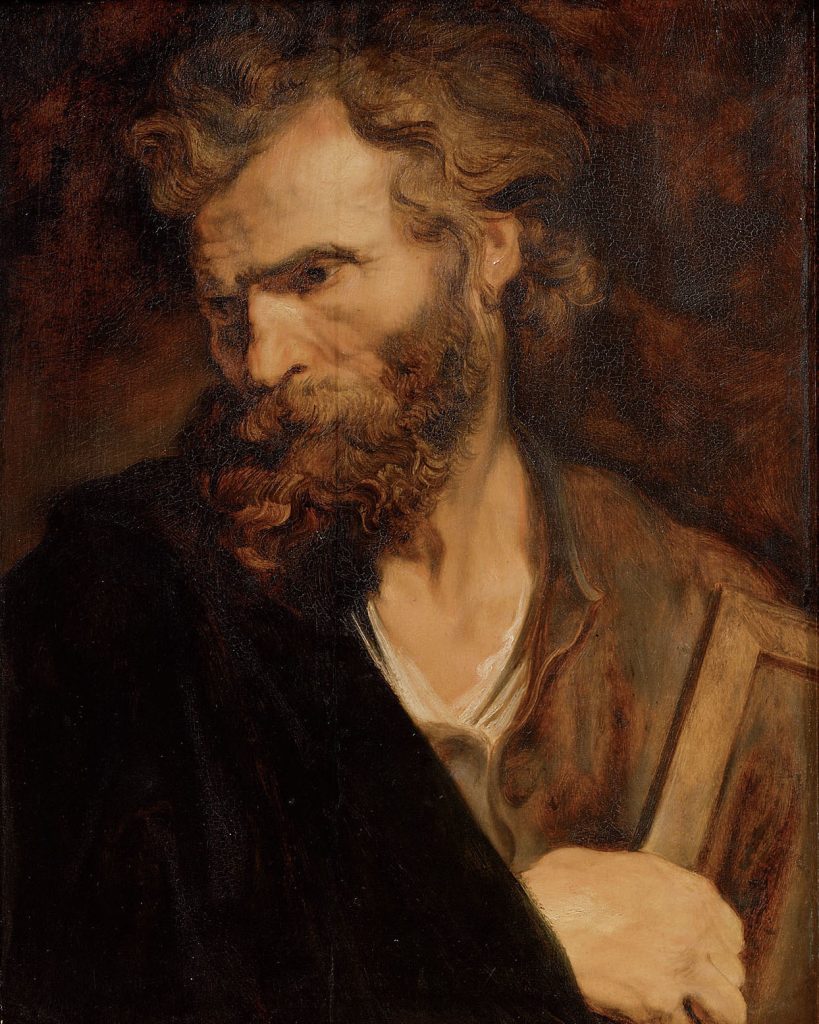
Saint Jude Thaddeus the Apostle (Wiki Image).
Jude Thaddeus is the apostle depicted at the far end of the table, next to Simon the Zealot, in Leonardo da Vinci’s The Last Supper. He is a young man with short hair and a beard. He is looking at Jesus with a questioning expression on his face.
Jude Thaddeus was one of the twelve apostles of Jesus Christ. He was also known as Lebbaeus or Thaddaeus. He was known for his zeal and his willingness to serve Jesus. He was also known for his martyrdom, as he was killed by the sword in Persia.
In The Last Supper, Jude Thaddeus is shown looking at Jesus with a questioning expression on his face. This is likely because he is trying to understand Jesus’s announcement that one of the apostles will betray him. Jude Thaddeus is also looking at Simon the Zealot, which could be a sign that he is trying to get his help in understanding Jesus’s words.
The depiction of Jude Thaddeus in The Last Supper is both realistic and symbolic. The realistic details, such as his short hair and beard, help to make him a believable character. The symbolic details, such as his questioning expression, help to convey the emotion of the moment.
Jude Thaddeus is an important figure in Christian history. He is a reminder of the importance of asking questions and seeking understanding. He is also a reminder that even in the midst of confusion, there is hope.
Here are some specific details about Jude Thaddeus in The Last Supper that are worth noting:
- He is looking at Jesus with a questioning expression on his face, which is a sign that he is trying to understand Jesus’s announcement.
- He is looking at Simon the Zealot, which could be a sign that he is trying to get help in understanding Jesus’s words.
- He is wearing a green robe, which is the color of hope and new beginnings.
Overall, Jude Thaddeus is depicted in The Last Supper as a questioning and perplexed apostle. He is a reminder of the importance of asking questions and seeking understanding. He is also a reminder that even in the midst of confusion, there is hope.
It is worth noting that some scholars believe that the apostle depicted in The Last Supper as Jude Thaddeus is actually Simon the Zealot. This is because the two apostles are often confused with each other in the Bible. However, there is no definitive answer to this question, and it is likely that Leonardo da Vinci simply combined the two apostles into one figure.
Simon the Zealot
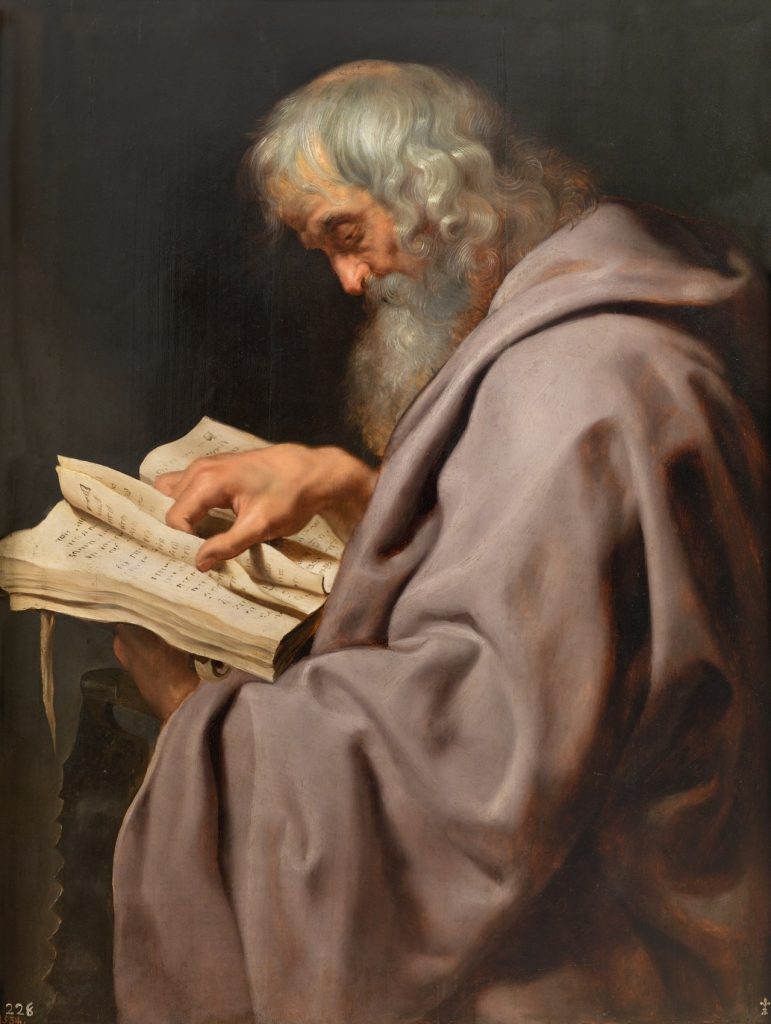
Saint Simon the Zealot (Wiki Image).
Simon the Zealot is the apostle depicted at the far end of the table, next to Jude Thaddeus, in Leonardo da Vinci’s The Last Supper. He is a young man with short hair and a beard. He is looking at Jesus with a determined expression on his face.
Simon the Zealot was one of the twelve apostles of Jesus Christ. He was also known as Simon the Cananaean or Simon the Canaanite. He was known for his zeal and his willingness to serve Jesus. He was also known for his martyrdom, as he was killed by the sword in Persia.
In The Last Supper, Simon the Zealot is shown looking at Jesus with a determined expression on his face. This is likely because he is committed to following Jesus, even in the face of betrayal. Simon the Zealot is also looking at Jude Thaddeus, which could be a sign that he is trying to reassure him.
The depiction of Simon the Zealot in The Last Supper is both realistic and symbolic. The realistic details, such as his short hair and beard, help to make him a believable character. The symbolic details, such as his determined expression, help to convey the emotion of the moment.
Simon the Zealot is an important figure in Christian history. He is a reminder of the importance of commitment and faithfulness. He is also a reminder that even in the midst of betrayal, there is hope.
Here are some specific details about Simon the Zealot in The Last Supper that are worth noting:
- He is looking at Jesus with a determined expression on his face, which is a sign that he is committed to following Jesus.
- He is looking at Jude Thaddeus, which could be a sign that he is trying to reassure him.
- He is wearing a red robe, which is the color of passion and sacrifice.
Overall, Simon the Zealot is depicted in The Last Supper as a determined and faithful apostle. He is a reminder of the importance of commitment and faithfulness. He is also a reminder that even in the midst of betrayal, there is hope.
It is worth noting that some scholars believe that the apostle depicted in The Last Supper as Simon the Zealot is actually Jude Thaddeus. This is because the two apostles are often confused with each other in the Bible. However, there is no definitive answer to this question, and it is likely that Leonardo da Vinci simply combined the two apostles into one figure.
What discussion they had was Matthew, Thaddeus, and Simon?
The discussion between Matthew, Thaddeus, and Simon in Leonardo da Vinci’s The Last Supper is also a matter of speculation, as there is no record of what was actually said. However, based on the painting and the biblical accounts of the Last Supper, it is possible to make some inferences about what the conversation may have been about.
In the painting, Matthew and Thaddeus are both looking at Simon, who is seated at the end of the table. Matthew is gesturing with his hands, while Thaddeus is looking shocked and confused. This suggests that they are asking Simon for his explanation of Jesus’s prediction that one of them will betray him.
Simon is known for his zeal and loyalty, so he may be trying to reassure Matthew and Thaddeus that Jesus is trustworthy. He may also be trying to figure out who the betrayer is himself.
It is also possible that the three apostles are discussing what to do in the wake of Jesus’s prediction. They are all shocked and confused, and they may be trying to come to terms with the fact that one of them will betray Jesus.
Ultimately, the discussion between Matthew, Thaddeus, and Simon is left up to the viewer’s interpretation. However, the painting does provide some clues about what the conversation may have been about. It is a moment of great confusion and uncertainty as the apostles try to make sense of Jesus’s prediction.
In addition to the biblical accounts of the Last Supper, there are also a number of historical sources that can be used to interpret the painting. For example, the writings of the early church fathers often mention the discussion between Matthew, Thaddeus, and Simon. These sources can provide some additional insight into what the conversation may have been about.
Ultimately, the discussion between Matthew, Thaddeus, and Simon is a mystery. However, the painting by Leonardo da Vinci provides a powerful and moving depiction of this moment in history. It is a reminder of the confusion and uncertainty that the apostles faced and the faith that they had in Jesus.
Here are some specific possible lines of conversation that Matthew, Thaddeus, and Simon might have had:
- Matthew: “Simon, what do you think Jesus meant when he said one of us will betray him?”
- Simon: “I don’t know, Matthew. I’m just as shocked and confused as you are.”
- Thaddeus: “Maybe it’s one of us who has been secretly working for the Romans.”
- Matthew: “Or maybe it’s someone we never suspected.”
- Simon: “Whatever the case may be, we need to be careful. We can’t trust anyone.”
- Thaddeus: “Agreed. We need to keep our eyes open and our guard up.”
This is just one possible conversation that Matthew, Thaddeus, and Simon might have had. The actual conversation is likely to have been much more complex and nuanced. However, this gives us a general idea of what they might have been talking about.
Jesus
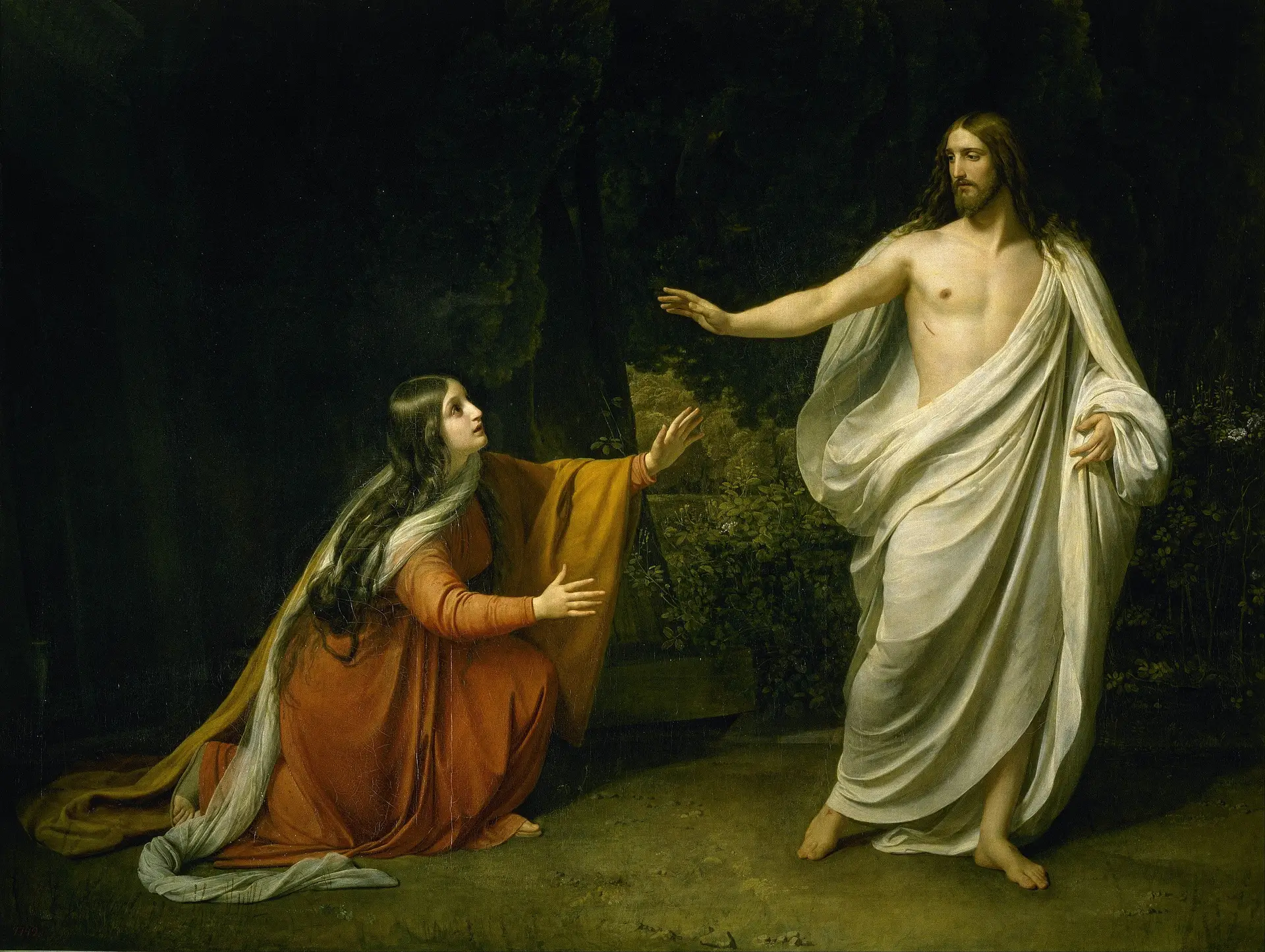
The Appearance of Jesus Christ to Maria Magdalena (Wiki Image).
Jesus in Leonardo da Vinci’s The Last Supper is depicted as the central figure seated at the head of the table. He is wearing a white robe and has a halo around his head. His hands are clasped together in front of him, and his face is calm and serene.
The painting is full of symbolism, and Jesus’s pose is no exception. The clasped hands represent his love and compassion for his disciples, while the halo represents his divinity. The calm and serene expression on his face shows that he is accepting of his fate, even though he knows that he will be betrayed and crucified.
Jesus’s position at the head of the table also symbolizes his authority and leadership. He is the one who is speaking, and the other disciples are all listening to him intently. This shows that Jesus is the one in charge and that the other disciples trust him implicitly.
Jesus’s presence in The Last Supper is both calming and powerful. He is the one who brings the disciples together, and he is the one who gives them hope in the face of adversity. He is the light in the darkness, and he is the one who will lead them to salvation.
Here are some specific details about Jesus in The Last Supper that are worth noting:
- His hands are clasped together in front of him, which is a gesture of love and compassion.
- His face is calm and serene, showing that he accepts his fate.
- He has a halo around his head, which represents his divinity.
- He is seated at the head of the table, which symbolizes his authority and leadership.
- He is speaking to the other disciples, which shows that he is the one in charge.
- The other disciples are all listening to him intently, which shows that they trust him implicitly.
Overall, Jesus is depicted in The Last Supper as a calm, serene, and powerful figure. He is the one who brings the disciples together, and he is the one who gives them hope in the face of adversity. He is the light in the darkness, and he is the one who will lead them to salvation.


